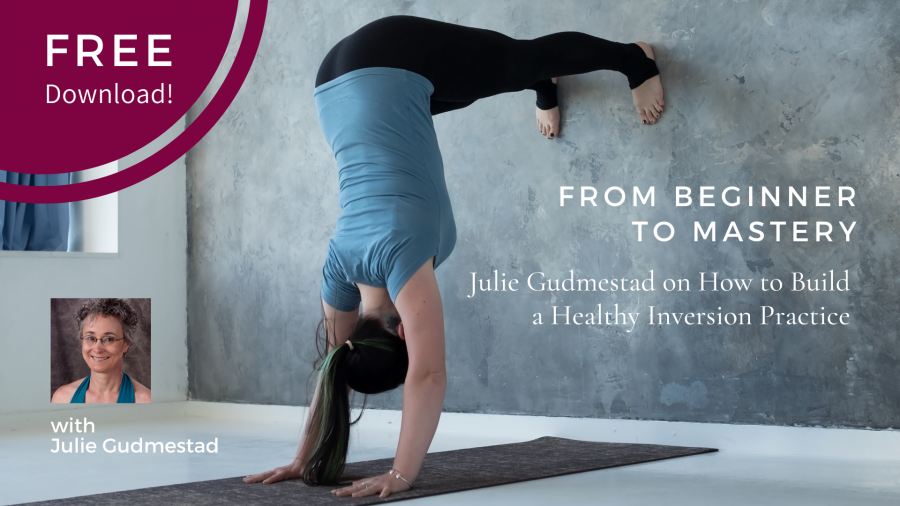Free Download! From Beginner to Mastery: Julie Gudmestad on How to Build a Healthy Inversion Practice
Course Info
- Price:
- $0.00
Julie Gudmestad
 Julie Gudmestad, PT, C-IAYT has been active in Portland, Oregon, as a yoga teacher and licensed physical therapist for over 40 years. She has integrated her western medical knowledge with yoga training into a unique teaching style, and regularly teaches anatomy and asana workshops throughout...
Julie Gudmestad, PT, C-IAYT has been active in Portland, Oregon, as a yoga teacher and licensed physical therapist for over 40 years. She has integrated her western medical knowledge with yoga training into a unique teaching style, and regularly teaches anatomy and asana workshops throughout... 
A common issue facing yoga teachers and yoga practitioners alike, is the question of how to safely advance in their yoga practice without risking injury.
This is particularly the case when it comes to challenging yoga postures, e.g. like Headstand, Handstand and Shoulderstand. Traditionally, these inversions postures have been considered the most important of all the different yoga postures. Particularly Headstand and Shoulderstand were cherished for their ability to balance the subtle energies of the body and tone the nervous system.
From modern science as well, we know that inversions (even modified variations that involve having the legs above the heart) can help facilitate lymphatic flow, enhance immunity, improve circulation, strengthen the legs, and increase core strength.
Yes, in modern day yoga practice, as more diverse students of varying age groups come to yoga, many yoga teachers and studios hesitate to introduce inversions.
And for good reason. While studies have found that yoga in general has a low risk of injuries, when injuries do occur, they are often linked to challenging inversions like Headstand, Shoulderstand or Handstand.
But just because a pose group is challenging, it doesn’t mean that we should give up on it, says Iyengar yoga teacher Julie Gudmestad, P.T. in this free download. This is even more so the case with inversions, which are an important pose group offering numerous rewards.
Instead, notes Julie, we should take a page from the science of physical therapy. When a person is unable to do a specific physical task, a physical therapist’s job is to back up a few steps and figure out what elements people need to work with so they can improve existing functions.
“Once you have evaluated the missing pieces,” Julie notes, “you can give these to students in bite-size pieces to slowly build into whatever functions they need.”
Often people coming to yoga are deconditioned, Julie notes. So the question is, how can we create a practice that is appropriate for them and prepares them for more advanced poses?
“We can’t just jump in and start doing challenging poses. When we are in our twenties or may be very athletic, it may be fun to push yourself,” says Julie. “But if we teach that way, there is a huge segment of the population that would get injured, overwhelmed, or demotivated to continue with yoga.”
Using Julie’s bite-sized approach to teaching, on the other hand, there is no external value of any pose, and there is no pose that is off the table for practitioners. The trick is to make a practice that fits a given student.
Click "Enroll Now" to Download!